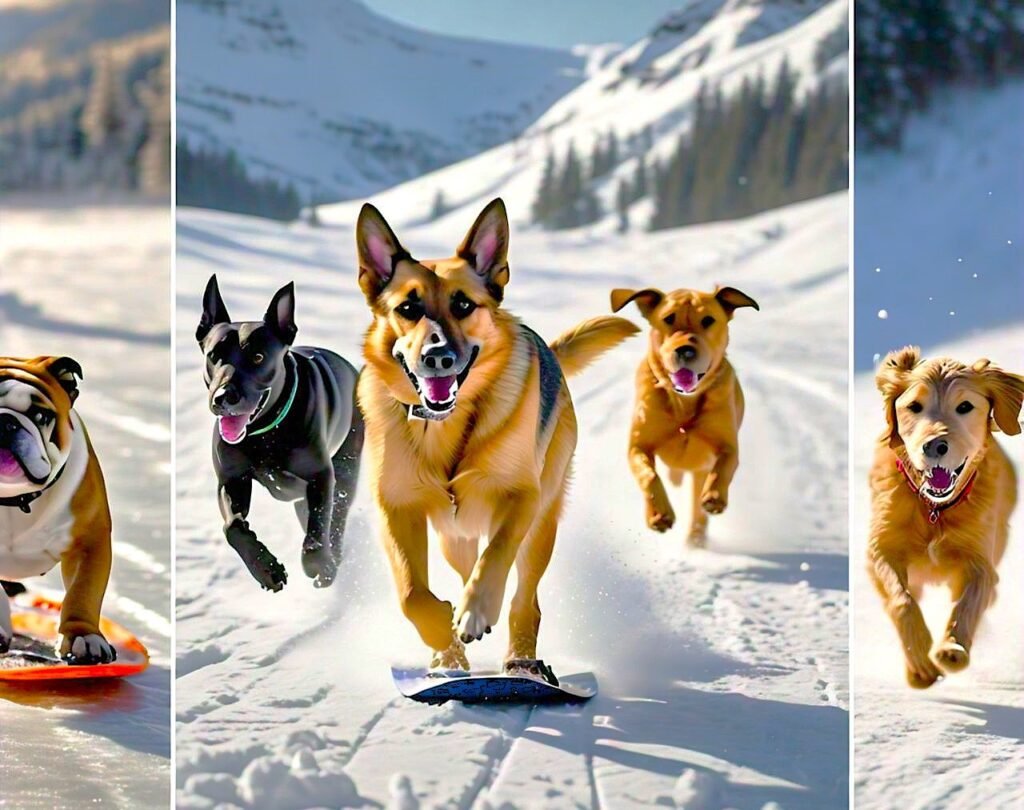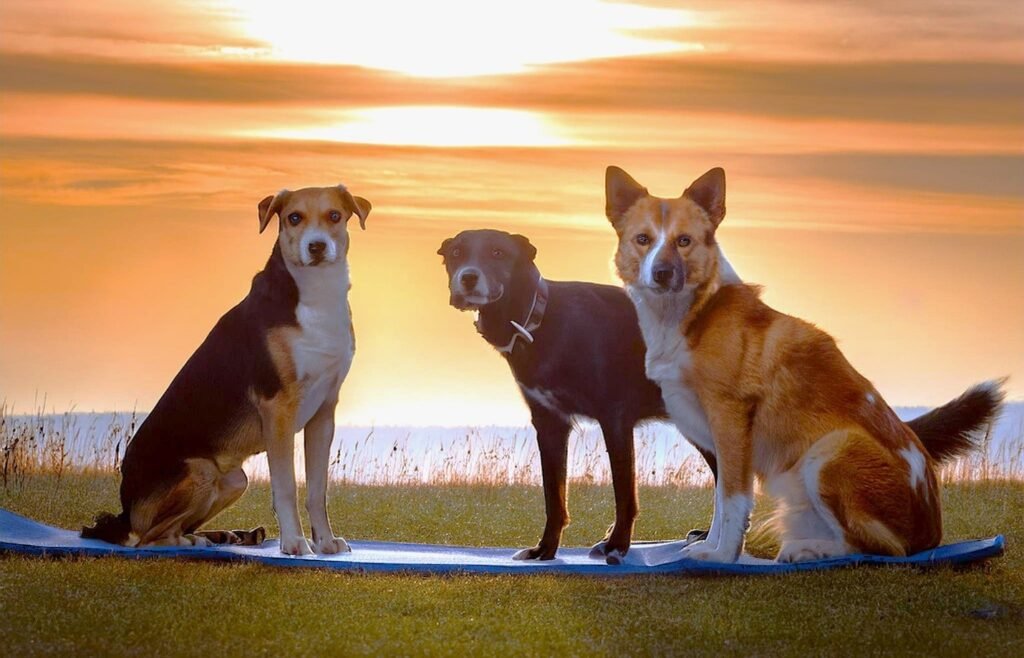Why Is Dog Exercise Important: The Need for Physical and Mental Exercise
Dog exercise routine is integral to your dog’s overall health, influencing their physical condition, emotional well-being, and enjoyment. Dogs, like people, require frequent physical activity to keep healthy. However, they also require cerebral stimulation to stay cognitively bright and emotionally balanced. Look at why physical and mental exercise is essential for your dog’s health.

So, let’s get started!
Benefits of Dog Exercise for Physical Health
- Weight Management: Control obesity to keep your dog slim and healthy. This will protect against diabetes, heart disease, and joint problems.
- Joint and Bone Health: Build your dog’s muscles and joints to keep him agile and flexible and lower the chance of arthritis.
- Better Cardiovascular Health: Regular exercise can help your dog’s heart health and energy levels by improving circulation and lung capacity.
- A long lifespan: Your dog will benefit from living a longer, healthier life with fewer health issues and a stronger immune system.
Benefits of Dog Exercise for Mental Health
- Behavioral Improvement: Avoid excessive barking and chewing by redirecting your dog’s energy into constructive activities.
- Stress Relief: Mental exercise for dogs can help your dog feel relaxed and comfortable by naturally reducing anxiety and restlessness.
- Cognitive Stimulation: Puzzle toys and training games can help your dog’s intellect stay bright and interested.
- Socialization: Make exercise time social time to assist your dog grow more self-assured and well-mannered in the presence of people and other dogs.
What is a bird dog exercise and its benefits?
Exercise for bird dogs has several benefits for various breeds, not just hunting dogs. This exercise improves your dog’s coordination, stamina, and attention by combining mental and physical demands.

Here are some benefits of bird-dog exercise:
- Enhances Physical Health: Bird dog exercise increases endurance and strength.
- Sharpens Mental Focus: By tracking scents, collecting objects, and following directions, they keep their minds active.
- Perfect for Several Breeds: This is not only for Spaniels and Retrievers, but any dog who enjoys fetching and solving puzzles can take advantage of it.
Specific Requirements for Bird Dogs
Bird dogs need exercises that resemble their hunting jobs, such as chasing dummies or field trials. This satisfies their natural desires and keeps them sharp.
Tips: Mental Exercise for Dogs
Mental exercise is as crucial for your dog‘s happiness and health as physical exercise. Dogs are intelligent animals that like mental challenges, so remember to include mental exercises in your daily routine.

Interactive Toys: To keep your dog occupied, get puzzle toys or treat-dispensing devices that demand problem-solving abilities.
Training Sessions: Regular obedience training stimulates your dog’s mind and builds the relationship between you and your dog.
Scent games: Use your dog’s keen sense of smell to locate toys or rewards hidden throughout the home.
Building the Right Dog Exercise Routine
An effective dog exercise routine will keep your pet fit, happy, and well-mannered. To get the best results, build your routine according to your dog’s breed, age, and level of activity.
Daily Walks: Daily walks are necessary for all dogs, regardless of breed. Walking provides physical activity and exposure to different places, both of which stimulate the intellect.
Playtime: To help your dog expend energy and stay involved, include engaging activities like fetch, tug-of-war, or agility training exercises.
Mental Challenges: Vary your dog’s games and training sessions to keep him mentally stimulated. Interactive play enhances their minds and prevents boredom.
Dog Exercise in Winter

Winter weather shouldn’t hold back your dog from doing physical exercise. Here are some tips to keep your dog active throughout the winter months:
Indoor Activities: Create an indoor hurdle course, play fetch in the corridor, or play games like hide-and-seek.
Short, Regular Walks: To exercise dogs in winter, divide long walks into shorter periods to avoid overexposure to cold weather.
Winter Gear: Coats, footwear, and reflective gear can help keep your dog safe during dog exercise in winter.
Tips for Effective Dog Exercise
1. Daily walks are a simple and effective exercise for dogs. They provide physical activity and cerebral stimulation as dogs explore new locations and odors.
2. Interactive Play: Games like fetch or tug-of-war stimulate your dog’s innate impulses, providing both a physical and cerebral challenge.
3. Training Sessions: Incorporate training into your daily routine to help your dog’s mind stay active. Teaching new instructions or practicing agility training keeps your dog’s mind and body active.
4. Variety: To keep the exercise enjoyable for both you and your dog, add fun to your dog’s exercise routine by combining swimming, hiking, or jogging with cycling.
What Dogs Require the Least Amount of Exercise?
Some dogs need less physical exercise than others, making them perfect for owners who prefer a more relaxing lifestyle. Even low-energy breeds require frequent exercise and mental stimulation to remain healthy.
Here are dog exercise requirements by breed:
- Basset hounds: These easygoing dogs like short walks and occasional play.
- Bulldogs: Bulldogs are known for their low energy levels; thus, they benefit from modest, controlled activity to avoid overheating.
- Cavalier King Charles Spaniels: These dogs enjoy a good stroll but are also content to relax at home.
Final Thoughts
Exercise is more than just exhausting your dog; it is about developing a dog exercise routine that combines physical activity with mental challenges tailored to their needs.
Remember that the best exercise plan for your dog keeps them active, healthy, and mentally stimulated. Whether you’re running agility training exercises for dogs with your lively Border Collie or going for a brief walk with your Bulldog, consistency, and diversity is crucial.
Following these suggestions may keep your dog healthy, happy, and mentally engaged, resulting in a stronger bond and a more rewarding life together.
Resources:
Brown, S., & Morgan, T. (2020). Canine Exercise Physiology and Training. Springer.
Landsberg, G., Hunthausen, W., & Ackerman, L. (2013). Behavior Problems of the Dog and Cat. Saunders Elsevier.
Shultz, S., & Dunbar, R. I. M. (2007). The Evolution of Social Brain of Anthropoid Primates Contrast with Other Vertebrates. Proc. R. Soc. Lond. B Biol. Sci., 274(1624), 2429–2436.

